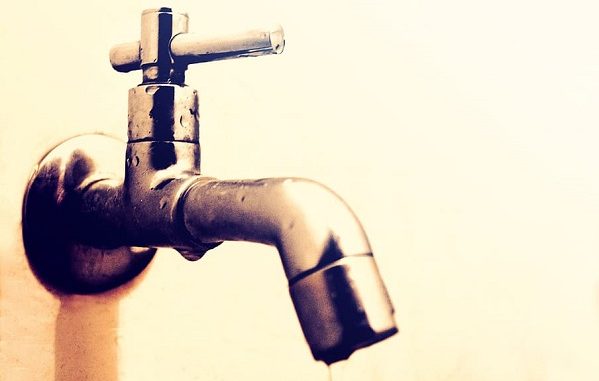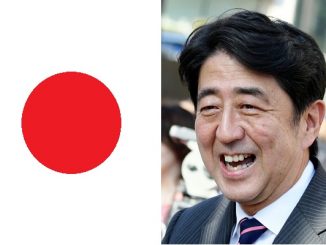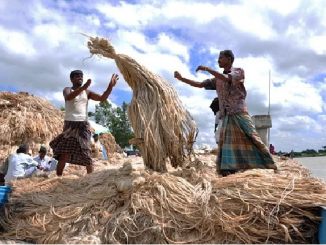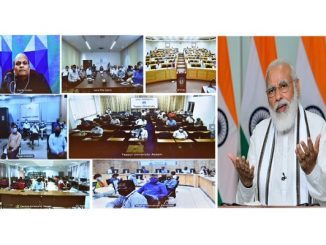
June 11: Maharashtra presented the Annual Action Plan to the Department of Drinking Water & Sanitation for consideration and approval. Maharashtra State has planned to provide 100% tap connections to all the households in the State by 2023-24. Out of 1.42 Crore rural households in Maharashtra, 53.11 lakh households have already got tap connections. The State is planning to provide tap connections to 31.30 lakh households in 2020-21.
State has planned for retrofitting and augmentation of existing 8,268 piped water supply schemes, thereby making provision of 22.35 lakh household tap connections during this year and the remaining 9 lakhs from new schemes. State has been advised to take up all these works in ‘campaign mode’, so that the remaining households belonging to poor and marginalized sections of the society get tap connections immediately. The State has made plan to cover 100% of its quality-affected habitations by 31st December, 2020. While planning for universal coverage of households, priority is given to water scarce areas, quality-affected areas, SC/ ST dominated habitations/ villages, aspirational districts, Sansad Adarsh Gramin Yojana villages, particularly vulnerable tribal groups.
Government of India has approved ₹1,828.92 Crore for implementation of JJM in the State during 2020-21. With an unspent balance with the state amounting ₹ 285.35 Crore and along with this year central allocation & matching State share, ₹ 3,908 Crore will be available with the state during 2020-21 for JJM. Further, 15th Finance Commission has allocated tied grants of ₹5,827 Crore to the State be spent mandatorily on (a) supply of drinking water, rainwater harvesting and water recycling and (b) sanitation and maintenance of ODF status.
Following the spirit of 73rd Amendment of the Constitution, under JJM, local village community/ Gram Panchayats and/or user groups are being involved in planning, implementation, management, operation and maintenance of water supply systems in villages to ensure long-term sustainability to achieve drinking water security. In all villages, IEC campaign along with community mobilization is to be taken up to make Jal Jeevan Mission truly a people’s movement. Voluntary organizations and self-help groups will play a vital role in community mobilization.
Under Jal Jeevan Mission, emphasis is being given on water quality surveillance through active participation of frontline functionaries as well as involving the community i.e. in every village, 5 persons especially women are being trained. School and college students are being encouraged to use the Field Test Kits to test the quality of water being provided in the rural areas. Every source needs to be tested once every year for physical and chemical parameters and twice for bacteriological contamination.
In every Gram Panchayat, GP or their sub-committee i.e. Village Water & Sanitation Committee or Paani Samitis are being constituted for planning at village level. Based on Village Action Plans of villages, the Annual Action Plan for the State has been finalized. State is ensuring convergence of funds from various sources like MGNREGS, 15th Finance Commission Grants to rural local bodies, SBM, CAMPA, District Mineral Development Fund, Local Area Development Fund, etc. for taking up works related to strengthening of water resources, aquifer recharge, grey water management, etc.
It’s the endeavour of the Government to provide tap connections in rural households on priority basis during prevailing CoVid-19 pandemic situation, so that rural people don’t have to go through the hardship of fetching water from public stand-posts and standing in long queue. Government intends that the poor and marginalized sections of the society get water through tap connections inside their house premises and avoid going to stand-posts and ensuring social distancing, thereby keeping the rural communities safe from being infected.
Jal Jeevan Mission, well implemented by the State, is a door to happiness for rural women by providing water in household premises and creating opportunities for economic activities by saving their precious time as well as improving the general health of the rural communities.
Source: PIB
Disclaimer: We donot claim that the images used as part of the news published are always owned by us. From time to time, we use images sourced as part of news or any related images or representations. Kindly take a look at our image usage policy on how we select the image that are used as part of the news.


